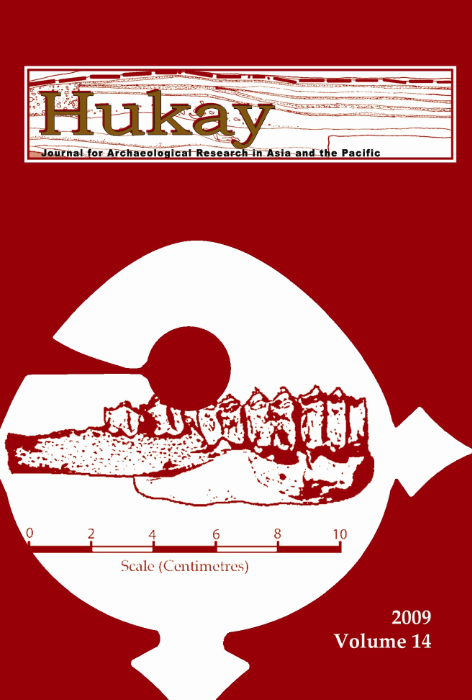Characterisation and Geological Provenance of Jasper that was Used for Debitages in the Archaeological Site of Tabon Cave, Philippines
Abstract
The upper Pleistocene site of Tabon Cave yielded traces of Homo sapiens that are among the earliest on the Philippine Islands. Studying the geographical and geological provenance of the raw material that was used for the production of lithic tools could help us to understand the behaviour of early Homo sapiens who settled in insular Southeast Asia. Excavations in the cave have unearthed a lithic industry produced in radiolarian jasper. The present research paper aims to find potential provisioning sites for this jasper. It also attempts to reconstruct some of the decisions that were made during the raw-material supply. The studied corpus contains nine flakes, exhumed by archaeological excavations, and forty jasper samples that were collected in the surroundings of Tabon Cave. The study is based on mineralogical determinations and geochemical analyses of the jasper. Energy dispersive x-ray spectroscopy and chromatic spectroscopy, complete and align with infrared spectroscopy in order to bring a first schema of raw-material supply into being.
The genesis of these silicifications is studied for the purpose of determining its influences on their homogeneity. It is shown that the selection by man depended on this homogeneity. The results of these methods suggest that the early man, who inhabited the Tabon Cave, supplied himself with jasper from the Panitian River and its confluent, Malatgao River. A distance of around 8–9 kilometres had to be covered in order to find raw-material with an adequate quality for knapping. The study also explains one of the idiosyncrasies of Tabon Cave’s reduction chain: the absence of unaltered raw materiel lumps in archaeological sediments. The absence of unaltered raw-material being transported into the cave seems to be due to the specific fracture patterns, created by the intense tectonisation of the jasper.
A first knapping had to be done on the raw-material bearing locus in order to separate these patterns. The study of the jaspers from Tabon Cave confirms and complements some hypotheses that have remained unproven since the 1970s. The circulation schema, issued by the study of raw-material supply, may contribute to the better understanding of early Homo sapiens in insular Southeast Asia.



